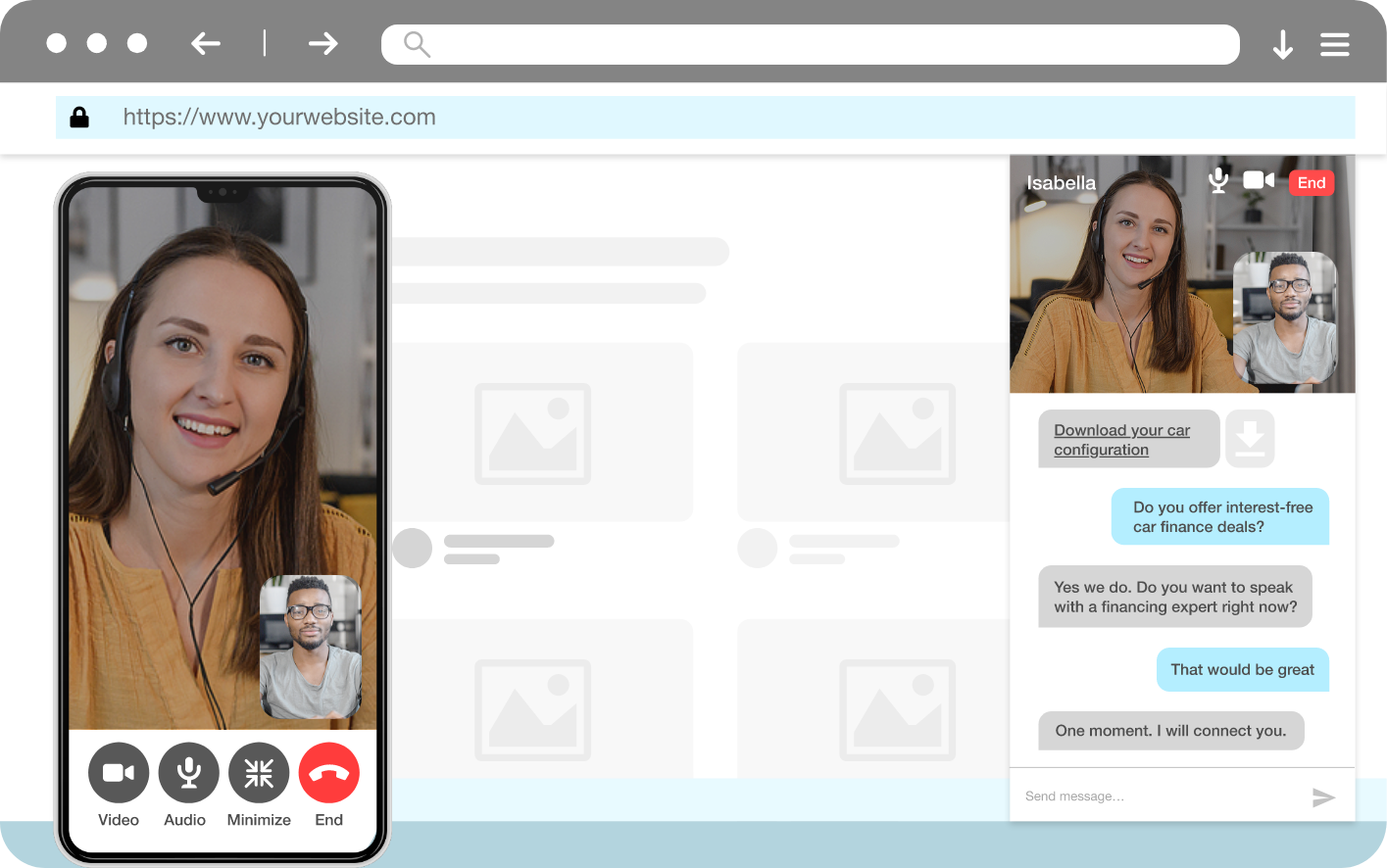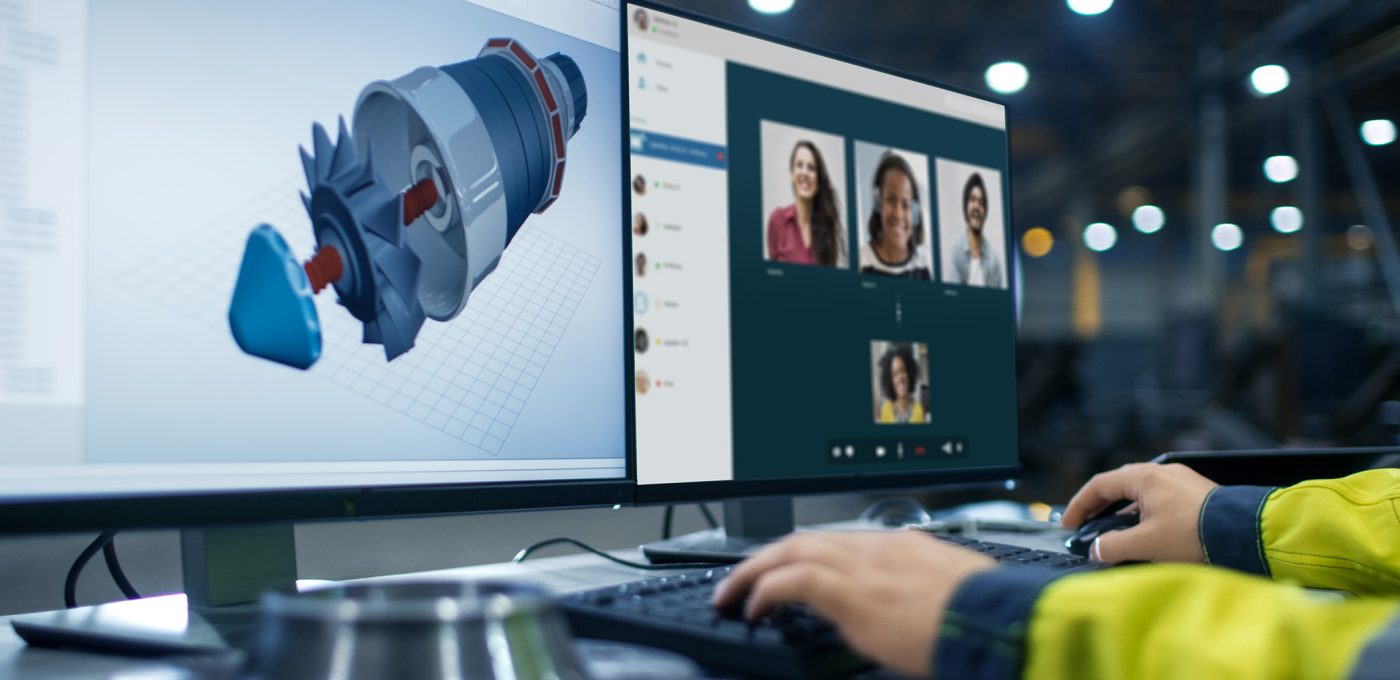Patience is a virtue.
Unless you’re dealing with a chatbot that doesn’t understand half of what you type, that’s true.
Then it’s just a waste of time.
You’ve probably had a similar experience. “Use a chatbot,” they said. Except no one told you that it could be so frustrating.
And that’s how most B2B buyers feel. The reality is that B2B eCommerce buying has slightly different dynamics than your average eCommerce transaction.
So how can B2B eCommerce manufacturers and suppliers deal with these dynamics? They can embrace conversational sales and, more specifically, consider adding live video assistants as part of their digital sales rooms toolbox.
But is this necessary?
Yes.
And the data backs that up.
Research from Gartner indicates that purchase regret for those customers preferring a rep-free experience is 23% higher than for customers who interact with a sales rep. It turns out that 73% of buyers find live chat to be the most satisfying way of communicating with a business.
And 63% of customers are more likely to return to a website that offers live chat.
Today, you’ll discover ways to use Live video assistants as part of your digital sales experience strategy as a B2B manufacturer or distributor.
But first, let’s examine what the conversational sales approach entails.
What is the conversational sales process?
The short version?
This process is a dialogue-driven approach to online sales. It relies on connecting with the customer via online tools. Engaging with customers using this process avoids friction points such as requesting forms.
Here’s the thing:
Conversational sales is an inbound technique. It is a technique that focuses on selling only to those customers who are ready to buy.
Moreover, this technique uses sales conversations to facilitate the questions or doubts of those who aren’t ready to make a purchase decision.
So is there an upside to this technique?
Absolutely.
The conversational sales technique has been proven to increase online conversion rates, improve customer experience, and shorten the sales cycle.
Conversational sales also reduce lead generation costs in various ways.
Curious?
Let’s explore more.
3 Ways Conversational Sales Reduces Lead Generation Costs
#1. Personalized interaction, shortening the buying cycle
Look:
Personalization plays a significant part in successful sales conversions.
Customers want to know that their challenges and sales objections can be addressed by the solution they are looking at before they commit to a purchase.
And that’s irrespective of the channel (online or in-store).
Usually committing this can lead to a longer buying process and a more costly conversion for complex solutions.
Therefore, conversational sales can help prospective buyers through their purchase journey more effectively, reducing lead gen costs.
#2. Customer-specific conversation – at scale
Through real-time chat features and real-time video, conversational sales can help manufacturers and suppliers engage with an unlimited number of web visitors at the same time.
B2B Manufacturers and suppliers can serve hundreds of clients and even add unlimited channels with more presenters while enduring conversations that stay personal and real-time.
And all this is possible with only one presenter talking and responding to questions.
#3. Effective Lead Engagement
The simple truth is that conversational sales enable in-depth, interactive engagement, both personalized and at scale.
Moreover, they allow manufacturers and suppliers to engage on a one-to-one and one-to-many basis better.
In this case, customer engagement involves showing prospective customers exactly how a product fits their needs and answering their sales pushbacks to bring them closer to a purchase decision.
This better customer experience leads to more seamless and relevant lead conversion.
So what’s the link between conversational sales and Live video assistants?
Let’s find out.
Live Video Assistants and Conversational Sales

As previously mentioned, conversational sales is a dialogue-driven approach.
Video has become a crucial component of the ideal digital marketing strategy. However, there’s one thing that is better than video, and that’s live video chat.
A live video assistant communicates directly with the user vs a text-based live chat. This is more effective for communicating thoughts to a customer.
A live video chat is also much faster because it significantly reduces the time taken to read a customer’s query and give a comprehensive answer.
With the significant shift to remote work due to the pandemic, B2B eCommerce suppliers and manufacturers need to get more innovative.
Live video assistants can be used as a way to limit physical contact without sacrificing valuable human-human face time. Leading to a positive customer experience.
Live Video Assistant—Suitable for B2B eCommerce?
The short, uncomplicated answer is yes. Sometimes customers need to talk it through verbally as opposed to using a chat experience.
This is especially true for B2B Buyers.
B2B purchases tend to be complicated. However, not all purchases require a meeting with a sales rep, but customers may have some additional questions they’d like answered.
A live video assistant combines self-service and self-guided experiences with a human touch that’s a human and not AI.
So how can B2B eCommerce suppliers and manufacturers leverage live video assistants?
Let’s find out.
4 Ways to Use Live Video Assistants in B2B Ecommerce
Customer Care and FAQs
If you’re using a chatbot, some questions may be difficult to answer because they need context.
B2B eCommerce suppliers and manufacturers can use video chat for customer service to identify the issue and deliver faster solutions.
Customer service reps can identify the root cause of the problem and provide the right solution in the first go, which reduces the number of required touchpoints.
Moreover, live video assistants are perfect for complex technical issues that need visual understanding, which is challenging to explain reactive channels (phone, email, or text ).
Live video assistants also help with faster resolutions of frequently asked questions (FAQs). In addition, having access to a live video interaction can help buyers deal with the ‘sticky’ elements faster.
Co-browsing With Customer Representatives and Support
Collaborative browsing is a method of screen sharing characterized by the simultaneous browsing of a single webpage by two or more individuals in real-time.
Co-browsing facilitates better remote support to B2B buyers. Through live video assistance, customer reps can guide customers through complex purchases. Specifically, co-browsing can be used to guide customers when it’s difficult to find resources within a website.
In addition, sales reps and buyers can use a configurator together via video chat. This is applicable mainly when a buyer doesn’t access some configurator features and needs more support.
Live Product Demonstrations
B2B eCommerce suppliers and manufacturers can use live video assistants to do product or service demonstrations for prospective customers.
In addition, B2B eCommerce suppliers and manufacturers can use live product demonstrations for customer onboarding.

Customer onboarding in a product-based organization is all about providing a helping hand to your new customers while demonstrating the value of your product.
Using video chat solutions for product demos makes the onboarding process seamless.
Virtual Showrooms and Tours
For B2B eCommerce suppliers and manufacturers, live video assistants are useful for virtual showrooms and tours.
Virtual showrooms are the perfect way for B2B buyers to experience your product without physically visiting your store.
With a virtual showroom, current and prospective customers can interact with your products via a mobile device, a computer, or even a Virtual Reality /Augmented Reality headset.
This tech helps to cut down the time needed to make purchasing decisions significantly.
When used alongside of other digital sales experiences, like visual configurations and conversational assistants, live video assistants can provide B2B manufacturers and suppliers an opportunity to engage with potential customers in the way that works best for them. Using these all together ensures customers are never left without a path to successful content discovery.

